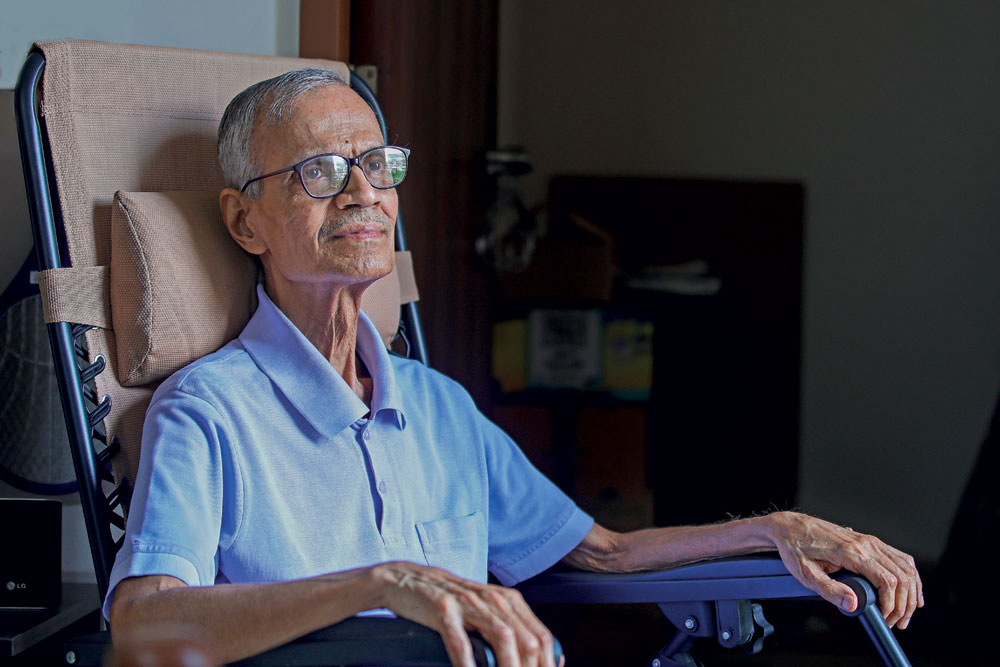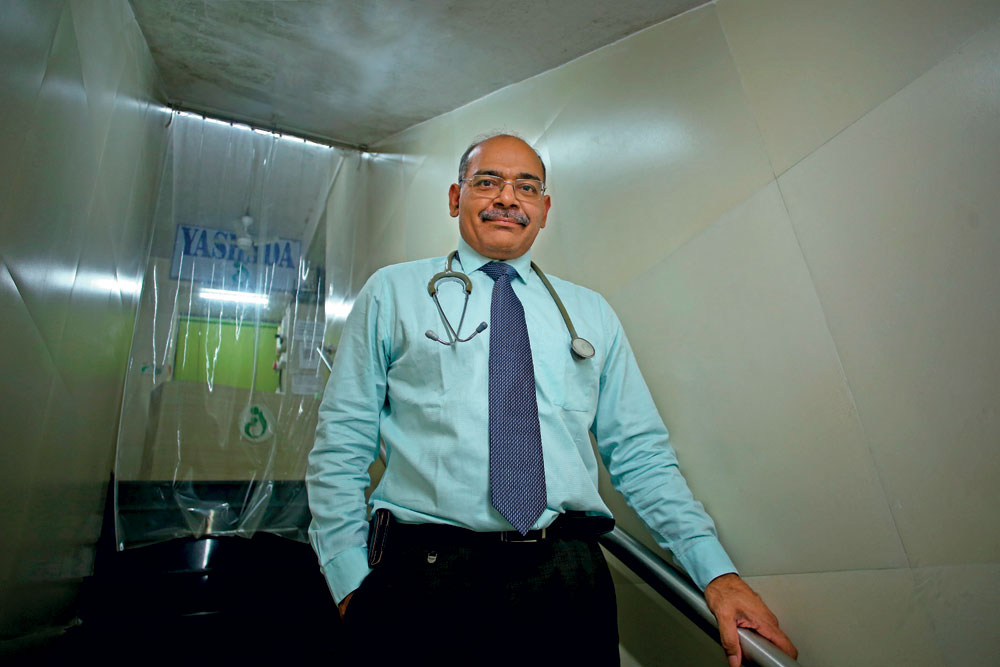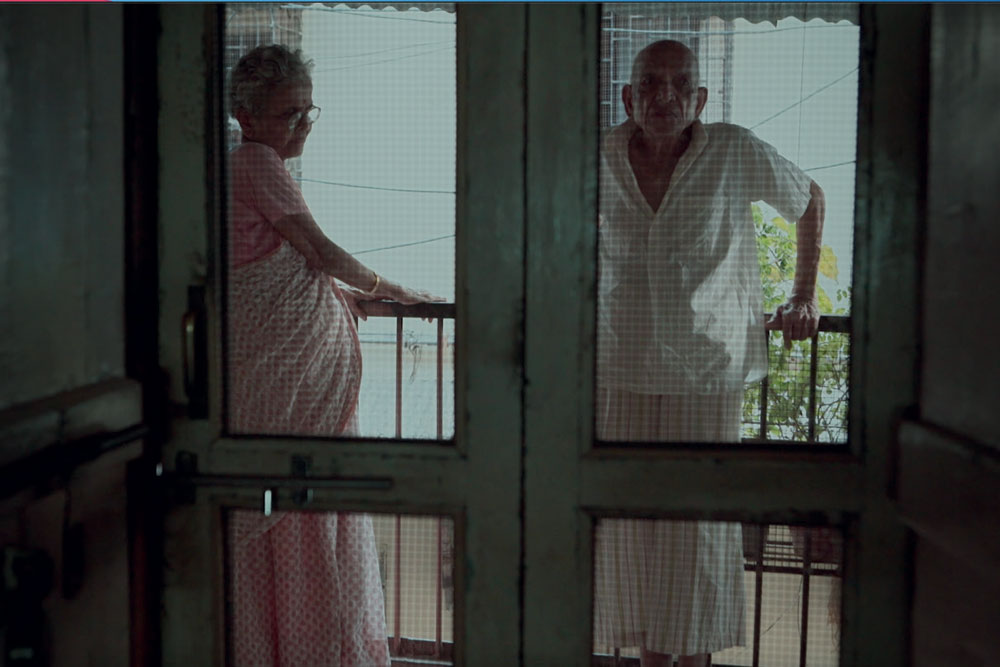Death Wish
While India permits euthanasia under specific conditions, a new case highlights the limitations of this policy
 Lhendup G Bhutia
Lhendup G Bhutia
 Lhendup G Bhutia
Lhendup G Bhutia
 |
06 Sep, 2024
|
06 Sep, 2024
/wp-content/uploads/2024/09/Deathwish1.jpg)
(Illustration: Saurabh Singh)
ABOUT 11 YEARS AGO, THE lives of Harish Rana and those in his family turned overnight. A young student who had moved to Mohali to pursue engineering then, Rana had fallen from the fourth floor of his paying guest accommodation. He survived, but only just.
Rana has since been in a permanently vegetative state. He has been living—many would argue in no real sense of the term—with severe brain injuries and complete paralysis, and with no hope of recovery. The only thing that has kept him alive is a feeding tube.
Earlier this year, Rana’s family approached the Delhi High Court to have the tube disconnected. The parents, both old, had exhausted their lives’ savings caring for their son, and they had now come to believe that he would not have wanted to live this way. They wanted the court to direct for the constitution of a medical board, as the procedure for ‘passive euthanasia’ demands, which could look into and approve this request. The Delhi High Court turned their plea down, and during their appeal in the Supreme Court, a bench headed by the Chief Justice of India DY Chandrachud recently made oral comments where it expressed its sympathies to the parents, but claimed it did not satisfy the parameters of passive euthanasia. “This is a very, very hard case,” the bench was quoted as saying. “In this case, it would amount to active euthanasia, which is not legal… The High Court was right. No doctor would agree to do that.” Disconnecting the tube, according to the judges, would not be akin to withdrawing life support for an individual with no hope of recovery, but actively assisting in his death.
In the absence of any laws passed by Parliament, India, through its judicial system, has drawn a line in its laws around euthanasia, permitting passive euthanasia or the withdrawal and withholding of life support in individuals with terminal illnesses and with no scope of recovery, but not assisting (active euthanasia) in the death of an individual. It is a fine line that can, according to many, be ethically and legally confusing. And this new case tests this distinction. Should disconnecting the PEG (percutaneous endoscopic gastrostomy) tube—a surgically-placed tube which passes nutrition via the abdomen and into the stomach, and which many medical specialists in the field view as a form of life support measure like a ventilator or drugs that force the heart to pump blood—and denying the individual nutrition be viewed as a form of assisted death, as the judiciary seems to be doing, and even a form of killing? Or should we view it as a means of liberation from a prolonged misery? Also, can a distinction between active and passive euthanasia even really be made, when switching off a respirator, for instance, is arguably as deliberate an act as injecting a lethal cocktail of drugs, and with both actions having the same objective—the death of a patient on humanitarian grounds?
These are ethically and legally complex and contentious issues, and the latest case of Rana brings this to the fore.
“All of us need to be better educated,” says Dr Roop Gursahani, a leading neurologist in Mumbai and a member of the steering committee of The End of Life Care in India Taskforce, referring to the Supreme Court equating the withdrawal of the feeding tube to active euthanasia. “Our judges need to be educated, our basics have to be clearer. In this case, even if you ask a lay person, he will say why is this [disconnecting the tube] considered wrong. It is a painful way to live.” According to him, a feeding tube should be—and is considered in many countries—a form of life support. “When you disconnect the tube, death will happen by starvation and dehydration. And you can manage the symptoms that arise. You can provide interventions like sedation that makes the passing away as peaceful as possible,” he says. “This is done worldwide.”
CanSupport, an organisation that provides free palliative care to patients, reached out to Rana’s family last month, when the news of the case first emerged. The family was initially reluctant to accept their help, Dr Ishita Gandhi, the director of palliative support at CanSupport, says, since they had spent many years searching for a curative solution, but they agreed, once the team explained what they do. “They had cared for him [Rana] for about 12 years now, first for a few years in hospitals, and the last nine years entirely at home,” Gandhi says. “The parents are both old now, and finding it increasingly difficult. They are looking for solutions. Also, all of this has been a big financial strain.” Rana’s father Ashok, who is retired, Gandhi says, earns a living making and selling sandwiches. A younger son has only recently begun working. Apart from the PEG tube, which needs to be changed in a hospital every month, Rana also relies on a catheter, and a tracheostomy tube, which is a tube that is surgically inserted through the neck and into the trachea to allow air to fill the lungs. “They have all [Rana and his family] been living a very hard life. And they have been doing it for years,” Gandhi says.

In India, we don’t like to discuss things like living wills. But it needs to be done. I live alone. A situation might arise when I cannot express my opinion,” says Uday Thakurdesai, former chartered accountant
Dr Surendra Dhelia, joint secretary of the Society for the Right to Die with Dignity, a group that supports voluntary euthanasia and which had petitioned for the “right to die with dignity” to be made a fundamental right within the fold of the “right to live with dignity”, is aghast at the way the Delhi High Court and Supreme Court have looked at the case. To him, there is no difference between withdrawing a feeding tube or switching off the ventilator in cases where there is no reasonable chance of recovery. “It is as good or bad as passive euthanasia,” Dhelia says. Dhelia was among the first individuals in India to draw up a “living will”, which is an advanced medical directive that specifies whether an individual should be kept on life support if a situation were to arise when he is incapable of expressing his opinion, long before it was given legal sanction through a Supreme Court ruling in 2018. In it, he has specifically stated under what conditions a feeding tube is to be inserted. “I have stated that if I am in an apparently reversible medical condition, where temporarily a feeding tube is required to keep me alive, then it is to be allowed for two weeks, after which it is to be withdrawn. Also, that if I become terminally ill without hope of recovery, the tube should not be instituted in the first place,” Dhelia says. “Now, I will have to remove the first part, and make a clear and unambiguous statement that artificial feeding should not be instituted at all. Because now, if I become ill, and I am put on artificial feed, and later I’m found to be in a terminally hopeless condition, going by the Supreme Court view now, the tube will not be allowed to be withdrawn.”
It was in 2011 in the Aruna Shanbaug case that the Supreme Court first came up with the distinction between active and passive euthanasia. The next big leap in India’s legal conception of euthanasia came in 2018, when the Supreme Court went a step further and confirmed that the right to a dignified death is part of the right to life under Article 21 of the Constitution, while also giving legal sanctity to the concept of living wills. The process that the Supreme Court had put in place—requiring the setting up of primary and secondary medical boards to consider the plea, the second having to be done on the direction of a judicial magistrate who would in turn have to visit the patient if the final go-ahead was to be given—was however so complex and tedious that the change remained but on paper alone. “It wasn’t just impractical, it was impossible,” Dhelia says.
Last year, the apex court tweaked the guidelines to make the entire process simpler. No magistrate involvement was required now—neither in setting up a board, nor in visiting patients and granting final approvals—and the waiting time for boards to make their decision was also reduced. The process of putting together and registering living wills was also eased. The only requirement from the state now was having a registered medical practitioner, appointed by the district’s chief medical officer, in the secondary medical board to decide on the plea for passive euthanasia and to consider a living will when it comes up for execution. For living wills, additionally, a notarised copy now needs to be submitted to a state-appointed custodian. More than a year since the new guidelines came into place, very few state governments have shown any alacrity in putting these into place.

There is the need to answer the question whether a given treatment is prolonging someone’s life or meaninglessly delaying death, says Dr Nikhil Datar, obstetrician, Mumbai
Dr Nikhil Datar, a gynaecologist and obstetrician in Mumbai, is currently in the midst of a case, in the Bombay High Court, for the setting up of these processes in Maharashtra. Datar is well-known for his activism, and he was instrumental in getting India to amend its abortion law to raise the gestational limit from 20 to 24 weeks. Last year, after the Supreme Court came up with a new set of guidelines on euthanasia, Datar prepared his living will, only to realise that the state government had neither appointed custodians, to receive the will, nor set up a panel of registered medical practitioners (which chief medical officers could appoint to secondary medical boards) to look into the wills when they needed to be executed. “As a doctor, I understand the limitations and scope of existing medical treatments and what they will probably be like for the next 20 or so years. There is already now, and there will increasingly be, the need to answer the question whether a given treatment is prolonging someone’s life or meaninglessly delaying death,” he says. Datar also wanted to draw up a living will because he has been privy to many situations when family members find themselves divided and unable to decide whether to withdraw life support or not to a patient beyond any hope of recovery, and he did not want anything of that sort to happen to him.
After he filed the case, the Maharashtra government appointed over 400 officials from various local bodies in the state to serve as custodians. The Bombay High Court, in its last hearing, pulled up the state for not having registered medical practitioners for secondary medical boards, and also allowed Datar to make the National Medical Commission (NMC) and the Union Health Ministry respondents to the case. The health ministry has been made a party because Datar wants living wills to be made part of our official digital health records that can be stored in and accessed through official digital wallets and apps like DigiLocker and ABHA (Ayushman Bharat Health Account). This way the living wills will gain more authenticity, and it will also become easier to use and even available to doctors and family members at a time when the patient is unable to communicate his wishes. Our healthcare infrastructure, at least in the private space, tends to be geared towards saving lives at all costs right to the very end, even if it might mean the use of invasive and needless interventions, and passive euthanasia, while permissible, is still viewed as somewhat unethical. Datar hopes to push the NMC to redraft sections of the code of medical ethics that state euthanasia is unethical and make the concept less proscriptive. “Right now, Chapter 6 of the existing code of medical ethics, which deals with unethical acts, begins with the sentence that euthanasia is an unethical act. The only exception to this is if somebody is brain dead and [they want to donate their organs] under the Transplantation of Human Organs [and Tissues] Act. So, the caveat is that if I want to donate my organs, and if I am brain dead, only then can the ventilator be disconnected, not for any other reason,” he says.
UNTIL A FEW years ago, living wills were being drafted mostly by a handful of doctors and activists who were trying to popularise the concept or goad the government and courts to legitimise it. On the ground, however, the concept had very few takers. While it is still early days, this seems to be slowly changing, with more individuals coming forward to put on paper how they would wish to go. Datar, who often holds talks on the need to put living wills in place, is often approached by individuals who want to do it. When he last spoke to the custodian appointed in Mumbai, he was informed that at least two or three individuals show up every week to submit their living wills.

Through her documentary Bhangaar, which follows an old couple in Mumbai seeking permission for ‘doctor-assisted’ death, filmmaker Sumira Roy found out about the immense alienation and loneliness among seniors in India today. The couple did not want to commit suicide, she says
Uday Thakurdesai, now almost 71 years old, lives alone in a retirement community in Pune. A former chartered accountant who retired as the director of a large financial services company, he has been a driving force to get more residents in his community to prepare living wills. At least around 30 living wills of residents in his building have been notarised, and many continue to consult him to prepare new ones.
Thakurdesai, along with other residents, had been discussing the subject for several years, but a personal wake-up call arrived when he had to undergo a bypass surgery a few years ago. “When I got admitted to the hospital, I told them all my health-related instructions. I also handed [control] over my finances to somebody temporarily for about a month or so, and told him all the financial things that needed to be done. But later, after the procedure, I bled heavily. I had made all those arrangements, but now I had to be taken back again and be operated upon. So, this was a wake-up call for me,” he says. “It wasn’t enough to make arrangements, I needed to make alternative arrangements too. Because an incident like this took place, and really anything can happen from thereon.”
Since then, Thakurdesai has prepared and submitted his living will to a custodian, appointed members of a trust, where he has already transferred half his property, as his representatives to execute the living will. He has also appointed three other people from his housing community as representatives and submitted a copy to the resident manager too. “In India, we don’t like to discuss these things. But it needs to be done. Well, I live alone. Tomorrow, a situation might arise when I cannot express my opinion. And even if you lived with a family, a situation might arise where the family takes a decision you might not have wanted. So, it is very much needed,” he says.
In India, much of the discussion around euthanasia revolves around the issue of when, and under what conditions, it becomes morally and legally tenable to withdraw life support in individuals with terminal illnesses. There are however many ailments, which cannot be classified as terminal, but which bring a lot of misery and pain. Two years ago, the case of an Indian suffering from myalgic encephalomyelitis and who was travelling to Zürich, Switzerland, to the organisation Dignitas, which provides physician-assisted suicide, came to the fore, when his friend filed a case in the Delhi High Court to stop him from travelling there. Myalgic encephalomyelitis is a debilitating ailment which causes immense fatigue and exhaustion, sleep abnormalities, pain and other symptoms. The fatigue worsens with activity, but even rest does not improve it, and there is no real cure, except for dietary supplements, antidepressants and counselling. According to the petition, the individual was completely bed-ridden and had, earlier that year, cleared the first round of psychological evaluation in Zürich. The friend eventually withdrew the petition, because, according to her plea, the news of it had traumatised the individual. There are possibly many other individuals suffering from ailments such as these, who might feel this way, but who will currently not fit the parameters set up for passive euthanasia.
And what of cases, where a person may have no illness to speak of, but who for some reason or the other, does not wish to continue living?
The filmmaker Sumira Roy explores this subject in her documentary Bhangaar (Obsolete in English), where she follows the couple Narayan and Iravati Lavate, who had created a stir in Mumbai some years ago when they sought permission from the president and state government for “doctor-assisted” death. The two, although old—Narayan is currently in his 90s and Iravati in her mid-80s—have no ailments, and were mentally sound. Many back then dismissed the plea as one being either borne out of depression or seeking attention. Roy was intrigued by the subject, she says, because her own mother, a year before her death, had often spoken about wanting to die with dignity, but she had paid little heed. Eventually, Roy followed the Lavates for a period of four-and-a-half years, becoming close to them in the process. “They want to die because they feel that their shelf life is over. That they were no use to society or to themselves. Another big factor is that they know they will inevitably fall sick, and death will come… It [euthanasia] will pre-empt illness and suffering… And if one suffers, what will the other do? They officially asked for the right to die so that both can go together, and go peacefully, without any suffering or any illness,” she says.
The couple did not want to commit suicide, she says, because they had lived their life with grace, and did not want to be known as the couple that had committed suicide. What Roy realised, as she made the documentary, is the immense alienation and loneliness among seniors in India today. “They become totally invisible [from our lives]. In the olden days, in joint families, all of them had stature. Now, as our joint families break up, that is not there,” she says.
Over a week ago, Thakurdesai was busy helping the family of a close friend prepare his living will. The friend, whom he has known for more than five decades, had successfully undergone treatment to remove a tumour from his jaw back in 2008. It had returned again now, in his other jaw, and begun to spread rapidly. The doctors had stopped treatment because it had become pointless. “My friend’s son and daughter came, and I shared a draft of the living will. And later, my friend’s wife called to say they were signing it,” he says.
The friend passed away a few days later. The will was probably not necessary, but they had it, just in case.

/wp-content/uploads/2024/12/Cover_Double-Issue-Spl.jpg)












More Columns
The Heart Has No Shape the Hands Can’t Take Sharanya Manivannan
Beware the Digital Arrest Madhavankutty Pillai
The Music of Our Lives Kaveree Bamzai